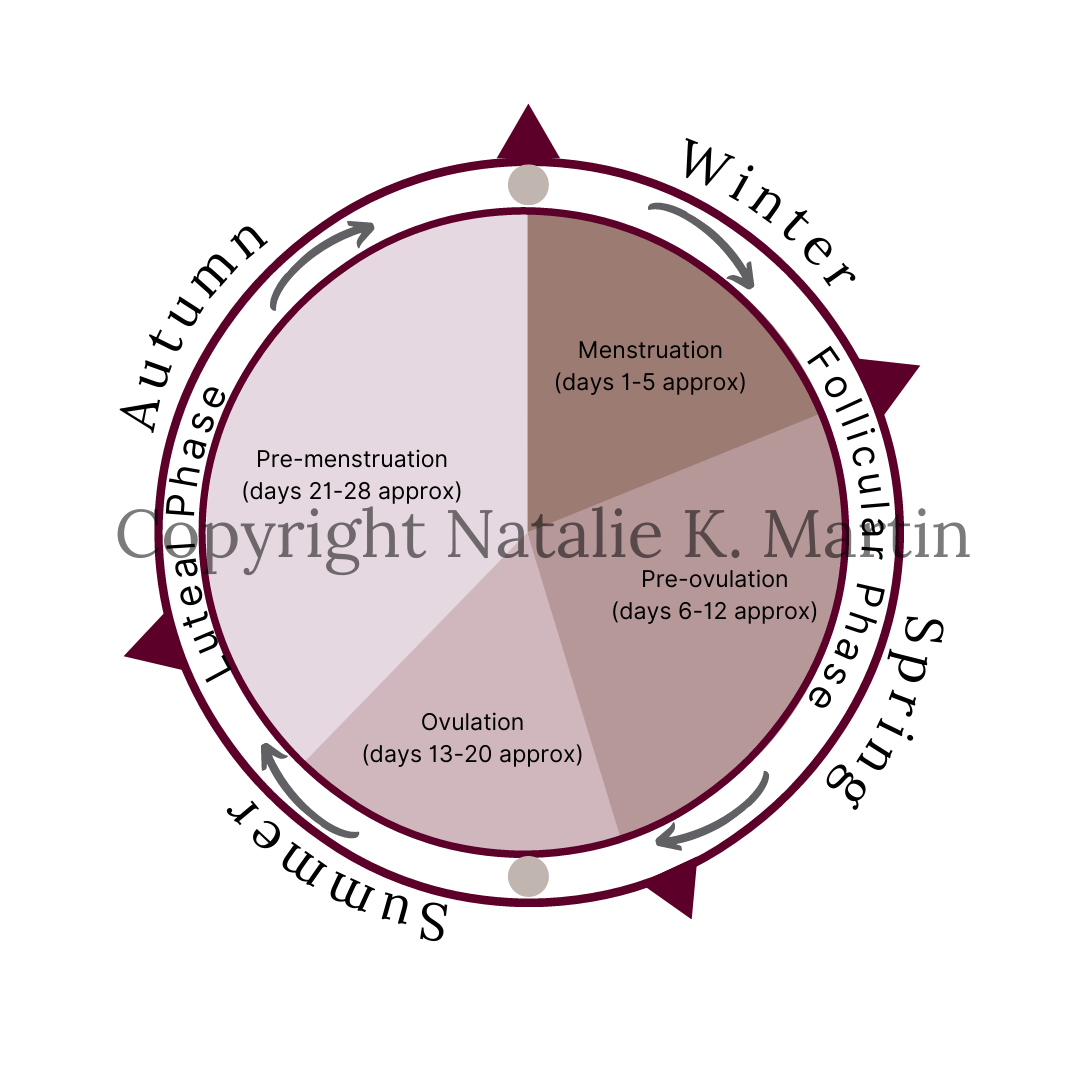Why the days before and after your period can feel so rough
Image: Hans Isaacson via Unsplash
When it comes to the menstrual cycle, culture has told us that the worst time of it should be your period. But the bleed phase is only one of four, and if you’re someone who feels fine while bleeding but awful in the time before and after it, you’re not alone.
Feelings of frustration, anger and dissatisfaction in the premenstrual phase are well known, but many women are surprised to hear that anxiety, overwhelm and vulnerability and fear are common after bleeding too. Here’s why.
The poles of the menstrual cycle
Like the earth, the menstrual cycle has two poles: menstruation and ovulation. On the cycle map below, you can see menstruation at the top and ovulation at the bottom (do know that this is an archetypal representation of the cycle, yours might look very different!).
Even if you experience them otherwise, these are stabilising places in the cycle. If you visit a doctor or professional about your cycle, they’ll want to know whether menstruation and ovulation are happening, because they’re key factors in overall health.
Menstruality Cycle Map - Copyright Natalie K. Martin.
Once you ovulate, you only have a finite amount of time until you bleed (unless you become pregnant of course). And once you finish bleeding, your hormones can get to work on preparing the body for ovulation.
The spaces between these two events are preovulation (a.k.a Inner Spring) and premenstruation (a.k.a Inner Autumn). Unlike menstruation and ovulation, these are transitionary phases of the cycle. Since your cycle is all about bleeding and ovulating, these inbetween times are like the journey towards ovulation and towards bleeding.
The thing about transitions, whether in the cycle or life, is that they can be rocky to navigate - especially if you’re unprepared and ill-equipped.
The journey to the poles
Think about the earth’s poles again and the journey it would take to get there. These are wild places that aren’t easy to get to. You can’t just go in your normal clothes with a pair of sneakers and a bar of chocolate for sustenance. These kinds of explorations take planning, preparation and adaptation when needed. It’s a herculean feat to get there.
The cycle is very much the same. If you don’t have a map, you will stumble from phase to phase with little to no knowledge of the terrain, falling into its pitfalls and missing out on the beautiful vistas. But if you do have one, you can plan when to move forwards and when to set up camp, as well as what kind of gear you need to survive the trip.
The preovulatory phase can feel like a lot because after bleeding, you can feel vulnerable and stripped bare. The pole of menstruation is a reset place, where you start again emotionally, mentally and physically. The rising hormones of preovulation can feel overwhelming in the body and being in a loud world can feel too much after the introspectiveness of bleeding. On a mundane level, there might be things to catch up on that you haven’t had the energy, motivation or physical ability to do while having your period, and the expectation to jump right back in and go from 0-100mph can lead to you feeling like a frazzled mess.
The premenstrual phase can feel like being yanked down to earth with a nasty bump after ovulation, because levels of oestrogen drop rapidly once your egg has been released. Much like the preovulatory phase, you might feel tender, raw and exposed in this phase of the cycle. Your self-protection mechanisms can kick in, leading you to want less social interaction, less responsibility and less noise. When you’re not aware of this, it can result in feelings of not-enoughness, comparison and rage.
The terrain in these places can be hard to follow, confusing and rough, but when you create your own map by tracking your cycle, you learn how to navigate them in a way that actually works. Your tools for doing so might be to do with self-care, learning how to pace yourself or making changes in your life that are adding to those tricky journeys. Best of all, because it’s a cycle, you get feedback all the time on how to improve your chances of making it to the next pole feeling less ruffled and frazzled, and more intact.
Tracking your cycle is as simple as counting each day from the start of your period, right up until your next one, and starting again. With each day that passes, take a moment to notice your lived experience - how does it feel to be you? You can check out an in-depth post on this right here: https://www.nataliekmartin.com/blog/howtochartyourmenstrualcycle
If you want to start tracking your cycle, you can grab my template for free by joining my email list below.
Curious about how coaching can help with your cycle? Schedule a free 30min call with me or check out my coaching space.

